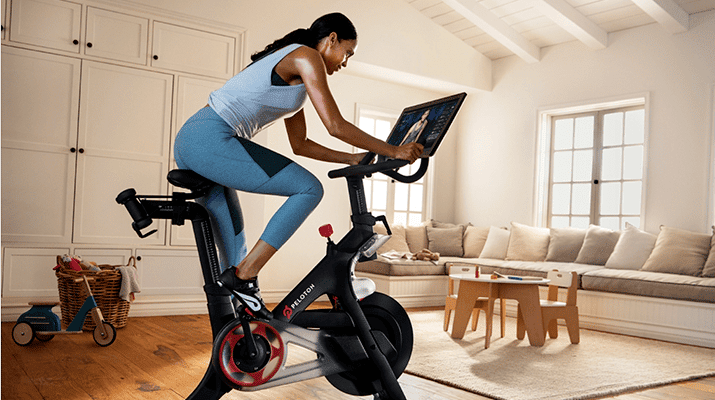By Deborah Jeanne Sergeant

During the pandemic, Peloton exploded in popularity as homebound people explored ways to get fit and stay active during quarantine and beyond.
The exercise equipment manufacturer makes not only exercise bikes but also programs to keep users moving and motivated.
The combination of equipment and programming proved so successful during the pandemic that the company struggled to keep up with demand.
But does Peloton live up to the hype?
For around $2,500, the Peloton bike comes with a rotating screen so that users can participate in cycling on the stationary bike and in non-biking classes. Peloton also makes a treadmill (costing around $3,500) and a rowing machine (around $3,100). In addition to the equipment, users can sign up for a separate membership for $44 a month to access all the Peloton programming, accessible to the entire household.
A convenient workout at home avoids the hassles of traffic and limited gym hours. There’s no intimidation of working out with fitter people. But does Peloton deliver results?
“With any workout program, consistency is going to be key, not matter what you’re trying to do,” said Noah Basehart certified personal trainer and general manager at NexGen Fitness and Recovery in Buffalo. “The Peloton is interesting because it does offer some engaging workout. You get to ride in a live class with an instructor. There’s a competitive element.”
Tuning into a live session can offer real-time feedback and accountability. Or users can select pre-recorded sessions. The programming includes classes in yoga, stretching, walk, running and resistance.
“There are workouts that go beyond biking, but you have to buy the equipment and the subscription,” Basehart said. “There’s nothing in-person. There’s no one there spotting you and watching your form. It’s all virtual. If you’re doing something that’s more high-risk, it’s really important to know you’re doing it correctly. You can get an engaging workout in, but there’s no one there to make sure you’re doing it correctly.”
Another layer of anonymity may provide a protective buffer, but it also forces users to rely solely upon themselves to feel motivated to participate and to participate fully once involved. There’s no one to check in on them if they do not show up or to monitor form and progress as they participate. They can skimp on repetitions or sets.
Chad Pozantidis, manager Terrie’s Boxing Club in Buffalo, believes that doing something is better than nothing, but “the only problem I’d see is there’s no one there to help you in case your form is incorrect,” he said. “No one is there to say when you’re on a different position on the bike, it’s not correct. People need to make sure they’re doing movements correctly.”
His wife uses Peloton when working out at home.
“It is convenient and you have a lot of different choices,” he said. “The app has a lot of different exercises on it.”
Peloton offers a rental option and month-by-month program option.

